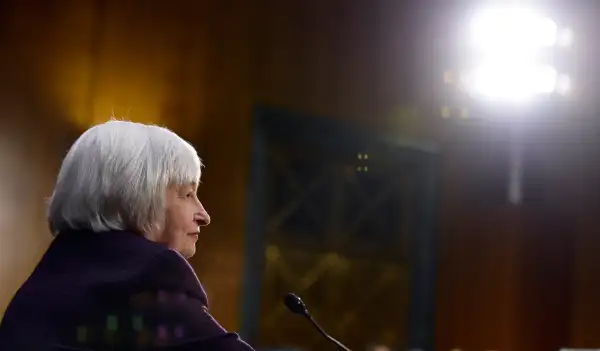What Today's Fed Testimony Means for Your Money
Money is not a client of any investment adviser featured on this page. The information provided on this page is for educational purposes only and is not intended as investment advice. Money does not offer advisory services.

Federal Reserve Chair Janet Yellen's testimony before Congress today bore her usual cautious language. But she signaled that an interest rate hike may still be on the table for later this year.
"If economic conditions continue to improve, as the Committee anticipates, the Committee will at some point begin considering an increase in the target range for the federal funds rate on a meeting-by-meeting basis," Yellen said.
Yellen worked hard to assure lawmakers that any rise in rates would be gradual, and wouldn't begin before June. The reason Fed chiefs take such care when talking about interest rates is that rates—and expectations about where they are headed—affect all aspects of Americans' financial lives, from student loans and mortgages to inflation and retirement portfolios. And right now the Fed has an especially delicate task, because it is trying decide how to transition from the near-zero short-term rates it has stuck to since the 2008 financial crisis.
Here's what could happen to your money when the Fed finally decides it is time to for interest rates to "lift-off":
1. Home loans could get pricier
Higher rates make borrowing more expensive for banks, and they in turn pass that expense on to their own borrowers. That generally tamps down inflation but also means it's harder to get loans for education, cars, and homes.
As a result, it's a good idea to refinance your mortgage now while rates are relatively cheap. Interest on 30-year fixed rate mortgage remains much lower than before the financial crisis, but rates have been inching up as of late and would grow further if the Fed becomes more hawkish.
2. The "safe" part of your retirement portfolio could take a hit (but that might hurt you less than you fear)
Investors traditionally hold bonds to hedge against stock market risk, but a rise in interest rates will cause the value of a bond portfolio to drop. For those who have time to keep their money invested, however, the higher yields you'll earn in the future will help make up for a drop in bond prices.
Short-term bonds are less risky than longer-maturity ones, and generally less sensitive to interest rate changes. But how your bonds perform will depend on exactly which interest rates change. The Fed directly controls short-term interest rates, so when they start moving those up, you can expect short-term funds to lose some value.
What happens to longer-term bonds is more ambiguous. They can have significantly more loss potential than short-maturity bonds. But Money contributor Carla Fried points out that it's possible that even as the Fed tries to raise short rates, bonds like the 10-year Treasury could remain in demand by global investors, who see the U.S. economy outperforming Europe and Japan and want to hold a safe-haven asset. That would keep long rates down—bond prices and rates move in opposite directions—and for a time deliver comparatively better returns to investors in longer-term bond funds.
So for many investors, an intermediate-term bond mutual fund is a good way to balance the general riskiness of long-term bonds against short-term bonds' specific vulnerability to a Fed rate hike this year.
3. The economy could slow down
Again, if the U.S. keeps growing, rising interest rates might be appropriate, and helpful in holding inflation and financial speculation in check. But it's important the Fed gets its timing right, or a rate hike could stall the recovery—or even put it in reverse.
That's what happened in Sweden, where the nation's central bank trashed what was a promising recovery by pulling the trigger too soon. Like the U.S. Federal Reserve, Sweden's Riksbank lowered rates during the recession in order to spur economic growth. Once that growth arrived in 2011, bankers decided to begin raising rates in order to thwart a real estate bubble. Soon after, hiring began to fall, deflation hit, and Sweden's magic recovery was over. The country has yet to return to its 2011 level of growth.
In deciding when to get rates back to normal, that's the scenario Yellen is trying to avoid.

